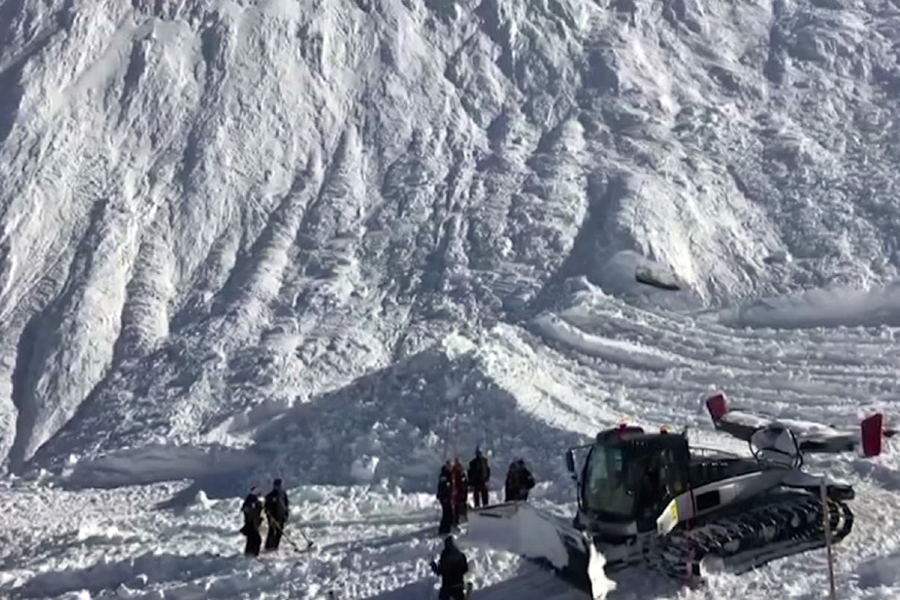After second avalanche in Tignes, is the backcountry becoming more dangerous?
Loading...
An avalanche struck French ski resort Tignes on Tuesday, after days of heavy snow, reminding the international mountaineering community that snow slides can happen anytime, anywhere.
Stormy weather slowed the rescue operation, but despite early reports of buried skiers, the resort said that no casualties had been found, taking to Twitter to announce that the avalanche has caused “no drama.”
Risk before the slide was reported to be a 4 on a scale of 5, leading guides to intentionally set off preventative avalanches. Nevertheless, part of the resort remained preemptively closed.
The Carline piste, where the avalanche took place, was one of the few areas to remain open. British tourist Laurence Blainey described the scene to the BBC:
"We were in the queue for the ski lift when suddenly 30 or 40 ski instructors came running and told everyone just to get up the mountain. It was orderly but very very urgent," he said.
Another avalanche struck the same resort just last month, killing four snowboarders in the worst accident of this year’s ski season. A skier group higher on the slope may have triggered that snowslide, according to the ski station’s statement.
The incidents come at a time when more skiers and snowboarders than ever before are choosing to leave the safety of resort-maintained terrain for the wild and deep snowpack in the backcountry. Many underestimate the danger of the unpredictable snow slabs, which claim even the lives of professionals, including two Olympic hopefuls and members of the US ski team during a 2015 Austrian Alps training session.
Casualties have been on the rise since the early 2000s, as the growing popularity of mountain sports gave rise to a generation of recreational mountaineers bolder than those of the past.
"We've been seeing a recreation boom in the last five years. Snowboarders and snow-machiners are going places that five years ago they didn't go," Doug Chabot, director of the Bozeman-based Gallatin National Forest Avalanche Center told The Christian Science Monitor in a 2001 interview.
Lured by the promise of deep, untracked powder, the increased number of enthusiasts results in greater casualties, dozens per year. More mountaineers boost the possibility of triggering an avalanche like the one last month in Tignes, and more people exploring an ever-expanding area raises their exposure to natural slides as well.
Yet skiers and riders continue to seek backcountry thrills in droves, despite the risk. "It hasn't stopped me or any of my friends," said Alex Worthington, a then-20-something snowboarder originally from Massachusetts, when asked by the Monitor in 2001 about Jackson Hole’s Glory Bowl. "Because everything around here gets hit so hard, if snow is untracked people want to enjoy it."
One problem is that some would-be backcountry adventurers take for granted the extreme measures resorts take to keep everyone safe. At many western ski areas, pre-dawn patrols detonate bombs and fire booming rifles in an effort to trigger any snowy slabs that may be ready to go. By the time potential human triggers arrive on the scene hours later, most dangerous areas have already slid.
"Avid ski-area enthusiasts often develop a false sense of security because we are so diligent in trying to make portions of the mountain safe," Fay Johnson, Bridger Bowl's ski patrol director told the Monitor. "But they take the same attitude with them when they ski the backcountry."
Many experts advocate for increased training in avalanche safety and snowpack reading for those hobbyists anxious to take their sport to the next level. They hope such measures could keep people safe in the US, as well as Europe, where 45 accidents caused 21 casualties in the Alps and Pyrenees last winter.








